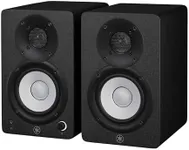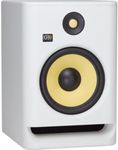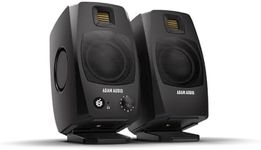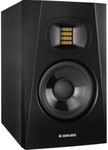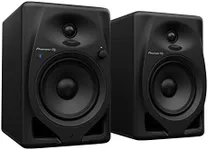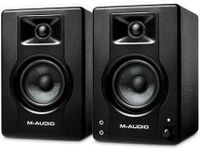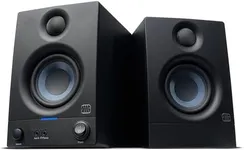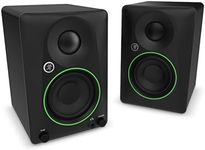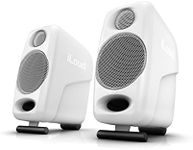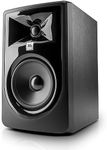Buying Guide for the Best Dj Monitors
Choosing the right DJ monitors is crucial for ensuring that you get the best sound quality and performance during your DJ sessions. DJ monitors are specialized speakers designed to provide accurate sound reproduction, allowing you to hear your mixes clearly and make precise adjustments. When selecting DJ monitors, it's important to consider several key specifications to ensure they meet your needs and preferences. Understanding these specs will help you make an informed decision and find the best fit for your setup.Frequency ResponseFrequency response refers to the range of frequencies that a monitor can reproduce, typically measured in Hertz (Hz). This spec is important because it determines how accurately the monitor can reproduce different sounds, from deep bass to high treble. A wider frequency response range means the monitor can handle a broader spectrum of sounds. For DJ monitors, look for a frequency response that covers at least 50 Hz to 20 kHz. If you mix bass-heavy music, you might prefer monitors with a lower frequency range to ensure the bass is well-represented.
Power OutputPower output, measured in watts (W), indicates how much power the monitor can handle and how loud it can get. This spec is important because it affects the volume and clarity of the sound. Monitors with higher power output can produce louder and clearer sound without distortion. For home or small studio use, monitors with 50-100 watts per speaker are usually sufficient. For larger spaces or professional use, you might need monitors with higher power output, such as 100-200 watts or more.
Driver SizeDriver size refers to the diameter of the speaker drivers, usually measured in inches. This spec is important because it affects the monitor's ability to reproduce different frequencies. Larger drivers (e.g., 8 inches) can produce deeper bass, while smaller drivers (e.g., 5 inches) are better for mid and high frequencies. For DJ monitors, a common choice is a combination of a larger woofer for bass and a smaller tweeter for treble. If you need more bass, opt for monitors with larger woofers. For a balanced sound, a standard 5-7 inch driver size is often ideal.
ConnectivityConnectivity refers to the types of input and output connections available on the monitor. This spec is important because it determines how you can connect the monitors to your DJ equipment. Common connections include XLR, TRS (1/4 inch), and RCA. Some monitors also offer Bluetooth or USB connectivity. Ensure the monitors you choose have compatible connections with your DJ mixer or controller. If you plan to use multiple devices, look for monitors with versatile connectivity options.
Room Size and AcousticsRoom size and acoustics refer to the physical characteristics of the space where you will use the monitors. This spec is important because it affects how sound travels and is perceived in the room. Larger rooms may require more powerful monitors to fill the space with sound, while smaller rooms may benefit from monitors with less power to avoid overwhelming the space. Additionally, consider the room's acoustics, such as the presence of sound-absorbing materials or reflective surfaces. Choose monitors that match the size and acoustic properties of your room for optimal sound quality.
Nearfield vs. MidfieldNearfield and midfield refer to the intended listening distance from the monitors. Nearfield monitors are designed for close listening, typically within 3-5 feet, and are ideal for small studios or personal use. Midfield monitors are designed for listening at a greater distance, usually 5-10 feet, and are suitable for larger studios or professional environments. This spec is important because it affects how you position the monitors and how sound is projected. Choose nearfield monitors if you will be sitting close to them, and midfield monitors if you need to cover a larger area.
